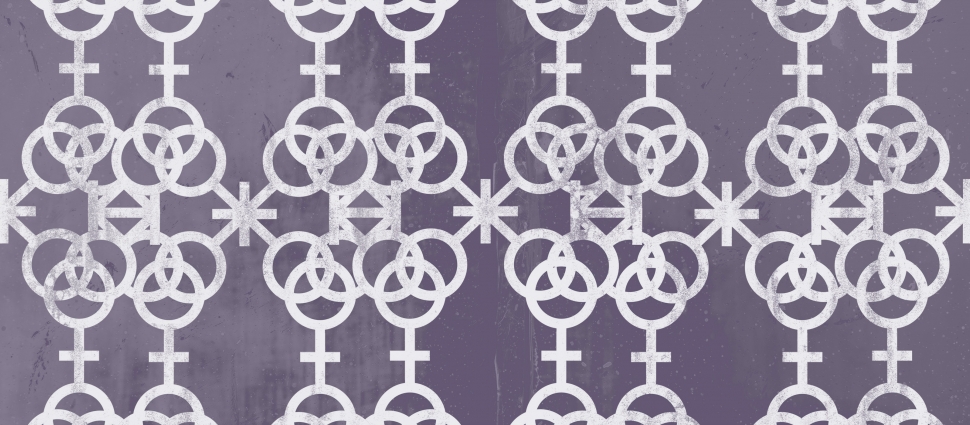Sexual Orientation

Note: This article is part of a series on terminology related to homosexuality.
“Sexual orientation” refers to an allegedly innate, unchangeable trait that makes it natural and normal for someone to engage in certain sexual practices. The term is used as both an explanation and a defense of homosexuality:
Explanation: People naturally seek sexual unions that fit their orientation. Those with a “heterosexual orientation” will naturally seek sexual union with a person of the opposite sex, while those with a “homosexual orientation” will seek sexual union with a person of the same sex.
Defense: Orientation is an innate and unchangeable trait, like height or skin color, and therefore outside the realm of moral evaluation.
However, the idea of sexual orientation fails in both respects. To take the second point first, let’s grant the (unproven) claim that there are certain biological correlations with homosexual behavior. It does not follow from this that homosexual behavior cannot be evaluated morally. The reason for this is that there are biological correlations to many human behaviors that are clearly subject to moral evaluation. For instance, men are much more likely to commit murder than women. This does not mean that a moral criticism of murder is sexist. Nor does it mean that “men are murderers” because of some innate and unchangeable trait. Human behavior is complicated, and biology is one factor.
Second, the notion of “sexual orientation” fails as an explanation of homosexuality. Unlike height, skin color, or sex, sexual orientation is not observable. It can only be discerned by observing a person’s behaviors and statements. It is therefore at least possible that “orientation” is a concept developed to justify certain sexual behaviors, rather than a real explanation of them. That possibility was already there in the early days of gay and lesbian ideology, but it has emerged as a distinct probability as LGBTQ+ ideology has evolved.
Let me explain what I mean. Consider the phenomenon of “bisexuality” (the “B” in the expanding acronym). Is this an orientation in its own right, or does it describe someone who moves back and forth between two orientations? Such questions are even murkier when “gender-fluid,” “non-binary,” “trans,” “queer,” and various other identities are thrown into the mix. No longer are we talking about an innate, unchangeable trait that makes certain sexual behaviors natural. Rather, we are talking about completely decoupling any evaluation of sexual behavior from innate natural traits.
The sexual revolution has evolved from arguing for the acceptance of gays and lesbians to arguing for the legitimation of other sexual identities (especially transgenderism). Along the way, the concept of orientation has lost its argumentative value. In fact, the concept is now being discarded by those on the avant-garde of the sexual revolution. This shows that it was never an explanatory concept used to describe reality, but an effort to defend and legitimize homosexual behaviors. It is a “back-formation,” a concept designed to provide an “upstream” warrant for certain conclusions.
Rational analysis of scientific evidence and social developments provide good reasons to be skeptical about the whole idea of sexual orientation. But Scripture goes further, slamming the door shut.
The Bible clearly and consistently teaches that homosexual behavior is sinful. In light of this fact, where could homosexual orientations have come from? Perhaps it came from God’s original creation of humanity. In that case, God created some humans in such a way that it is natural for them to engage in homosexual practices. Having created them thus, he went on to prohibit the very sexual practices that he designed them to find fulfillment in. This would be sadistic and tyrannical, and it is high blasphemy to attribute this to God.
Or perhaps sexual orientation came from our fall into sin. In this case, homosexual orientations belong, as the catechism teaches, either to the “misery” of our fallen condition or to its “sinfulness.” The whole thrust behind the term “sexual orientation” is to place it in the category of “misery”—a circumstance that shapes our life, rather than a choice that can be morally evaluated. If it is part of our “misery,” then it is a tragic circumstance indeed. But God does not forbid us from enduring tragic circumstances: there are no laws in Scripture against poverty, sickness, or grief. There are, however, laws against being “soft” (1 Corinthians 6:9) or adopting the appearance of the other sex (Deuteronomy 22:5).
A homosexual orientation, therefore, must be part of our “sinfulness” as fallen men and women. This means that the only biblically consistent way to speak of “sexual orientation” is to recognize that sexual desires and behaviors do occur in deep and persistent patterns. These patterns may be so deep as to feel natural. But the same is true of other sins: it is “natural” for us sinners to be proud, greedy, angry, and so on. None of these sins, however, are “natural” in the sense that that they are normal and right behaviors for humans.
Nor are these patterns unchangeable. Even the deepest and most persistent sins in our lives are changeable, both because we are rational beings with free will and moral responsibility, and even more because God gives transforming grace to sinners who call out to him for mercy. This is why Paul could say to repentant homosexuals at Corinth: “such were some of you, but you are washed” (1 Corinthians 6:10).
Calvin Goligher is the pastor of First OPC in Sunnyvale, California. He and his wife Joanne have four young children.
Related Links
"Courageous Christian Sexuality" by William Boekestein
The Rise and Triumph of the Modern Self by Carl Trueman
"Identifying Our Identity" by Jared Nelson
Revoiced Spirituality by Jonathan Master
Biblical Personhood & Gender Confusion, with Derek Thomas, Richard Phillips, and Rosaria Butterfield.




